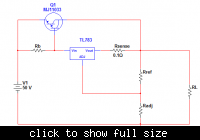Sajjadkhan
Full Member level 5
- Joined
- Sep 25, 2010
- Messages
- 307
- Helped
- 17
- Reputation
- 34
- Reaction score
- 16
- Trophy points
- 1,298
- Location
- Rawalpindi,Pakistan
- Activity points
- 4,199
pufffffff, ok after checking the whole market i found AD623,, its rail to rail and 100uV of offset. what do you thing about it?
secondly is it possible to sense current with an op-amp which is not rail to rail, any reason? as i found AD620 also. I would be having negative supply in my circuit though.
secondly is it possible to sense current with an op-amp which is not rail to rail, any reason? as i found AD620 also. I would be having negative supply in my circuit though.
